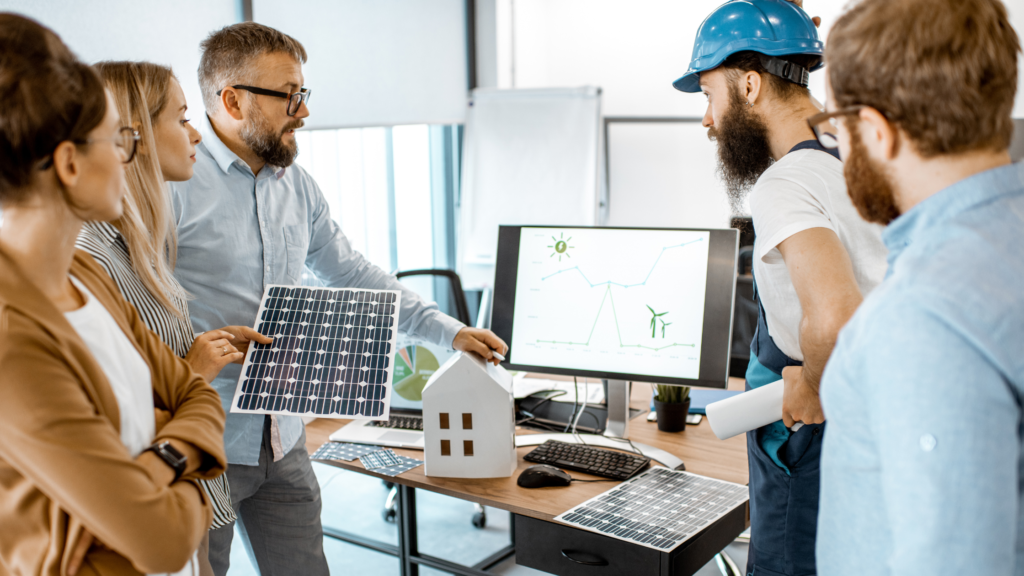Empowering Communities Through Renewable Energy Projects
The energy landscape is changing, and communities are taking the lead. Community-led renewable energy projects are revolutionizing how we think about power generation and distribution. These initiatives are more than just a way to reduce carbon emissions – they’re about empowering local communities, fostering sustainable development, and creating a more equitable energy future. What Are Community-Led Renewable Energy Projects? At their core, community-led renewable energy (CLRE) projects are locally-owned and managed initiatives that generate clean energy for a specific community. Unlike traditional energy models dominated by large corporations, CLRE projects put the power – quite literally – in the hands of local residents. These projects come in all shapes and sizes. You might see a group of neighbors investing in rooftop solar panels, a small town building its own wind farm, or a rural community setting up a micro-hydro system. The common thread? Local ownership, local decision-making, and local benefits. Why Community-Led Projects Matter Empowering Local Communities CLRE projects give communities control over their energy resources. This isn’t just about keeping the lights on – it’s about economic independence, energy security, and community resilience. When communities generate their own power, they’re less vulnerable to external shocks and price fluctuations. Moreover, these projects foster a sense of ownership and pride. Community members aren’t just passive consumers of energy – they’re active participants in their energy future. This engagement can spark wider interest in sustainability and local development. Promoting Sustainability The environmental benefits of renewable energy are well-known, but community-led projects take it a step further. By focusing on small-scale, decentralized solutions, these initiatives often have a lower environmental impact than large-scale energy projects. They can be tailored to local conditions and needs, maximizing efficiency and minimizing disruption to local ecosystems. More Than Just Clean Energy Community-led renewable energy projects aren’t just good for the planet – they’re good for local economies too. These initiatives create jobs, from project planning and installation to ongoing maintenance and management. They keep energy spending local, circulating money within the community rather than sending it to distant utility companies. In some cases, community energy projects can even generate revenue. Excess energy can be sold back to the grid, creating a new income stream for the community. This financial benefit can be reinvested in other local development projects, creating a virtuous cycle of sustainable growth. Building Stronger Communities The social impact of community-led renewable energy projects shouldn’t be underestimated. These initiatives bring people together, fostering collaboration and strengthening community bonds. They can be a source of local pride and identity, especially in rural or underserved areas. Moreover, by providing affordable and reliable energy, these projects can improve quality of life. They support essential services like healthcare and education, and can help reduce energy poverty – a critical issue in many parts of the world. Models for Community-Led Renewable Energy Community-Led Renewable Energy projects empower communities to generate, manage, and benefit from renewable energy. These initiatives come in various forms, each tailored to meet specific community needs and leverage available resources. Here are some key models: Strategies for Success Building Strong Partnerships Successful community-led renewable energy projects often rely on strong partnerships. Collaborating with local governments can help navigate regulatory issues and secure necessary permits. Partnering with NGOs or universities can provide technical expertise and access to resources. Even private sector partnerships can be valuable, offering funding or technical support. Securing Funding and Resources Funding is often a major hurdle for CLRE projects. Communities need to get creative, exploring options like: A solid business plan is crucial. It should clearly demonstrate the project’s feasibility, potential impact, and long-term sustainability. Ensuring Community Engagement Community engagement is the heartbeat of these projects. It’s essential to involve local residents from the start, ensuring the project meets their needs and has their support. This might involve: Overcoming Challenges Technical and Logistical Barriers Many communities face technical challenges when implementing renewable energy projects. This might include a lack of local expertise or difficulties accessing suitable technologies. Solutions can include: Navigating Regulatory Landscapes The regulatory environment for community energy projects can be complex and varies widely between regions. Communities may need to: Looking to the Future Community-led renewable energy projects represent a powerful model for sustainable development and local empowerment. As technology costs continue to fall and awareness grows, we’re likely to see these initiatives proliferate around the world. For communities considering their own renewable energy project, the journey may seem daunting. But the potential rewards – economic, environmental, and social – make it a worthwhile endeavor. With careful planning, strong partnerships, and community engagement, local renewable energy projects can transform not just how we power our homes and businesses, but how we build resilient, sustainable communities for the future. As we face the global challenges of climate change and energy security, community-led renewable energy projects offer a beacon of hope. They show that solutions can come from the ground up, driven by the ingenuity, determination, and collective action of local communities. In this way, we’re not just generating clean energy – we’re generating a more sustainable and equitable future for all.
Empowering Communities Through Renewable Energy Projects Read More »

